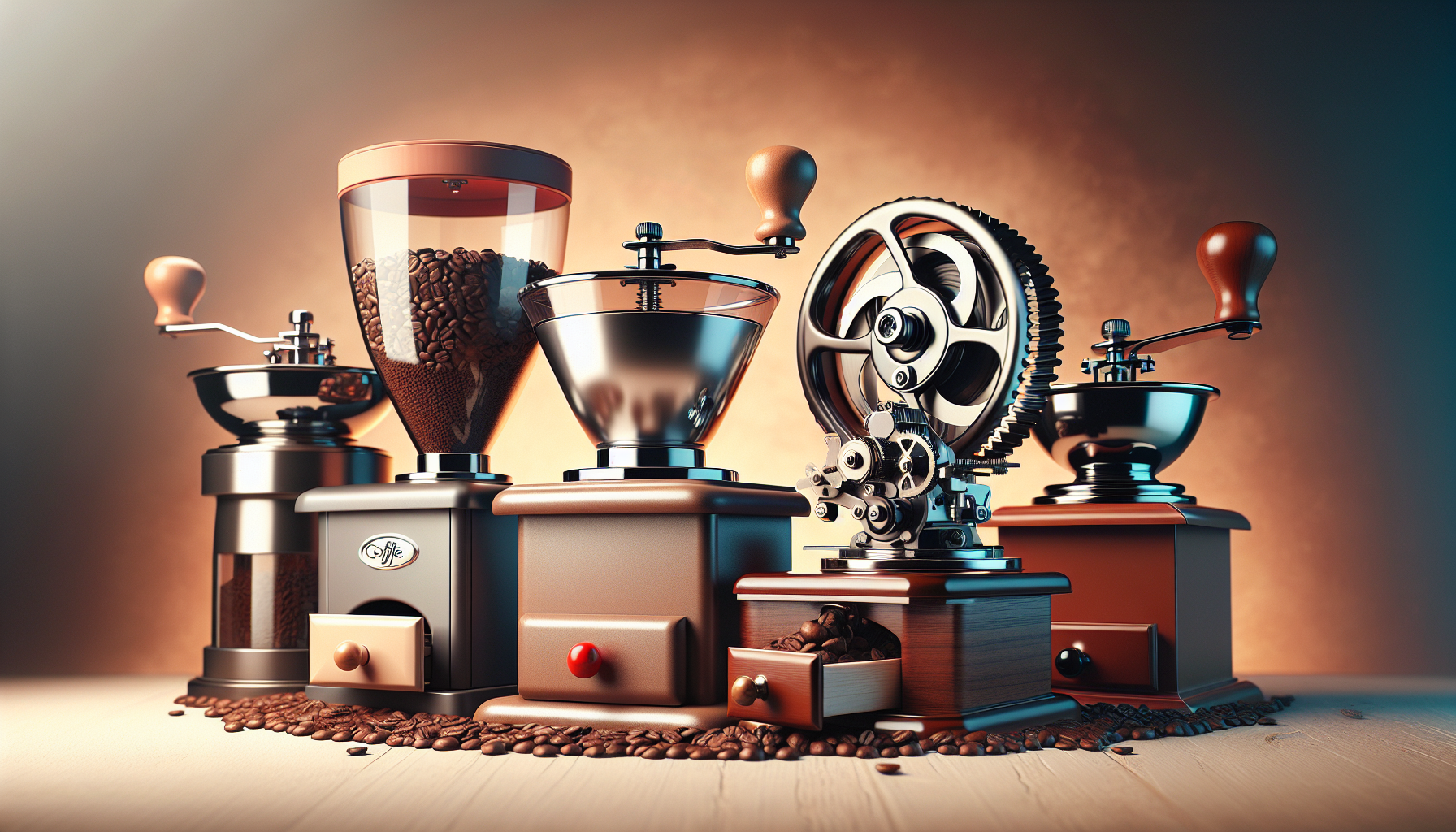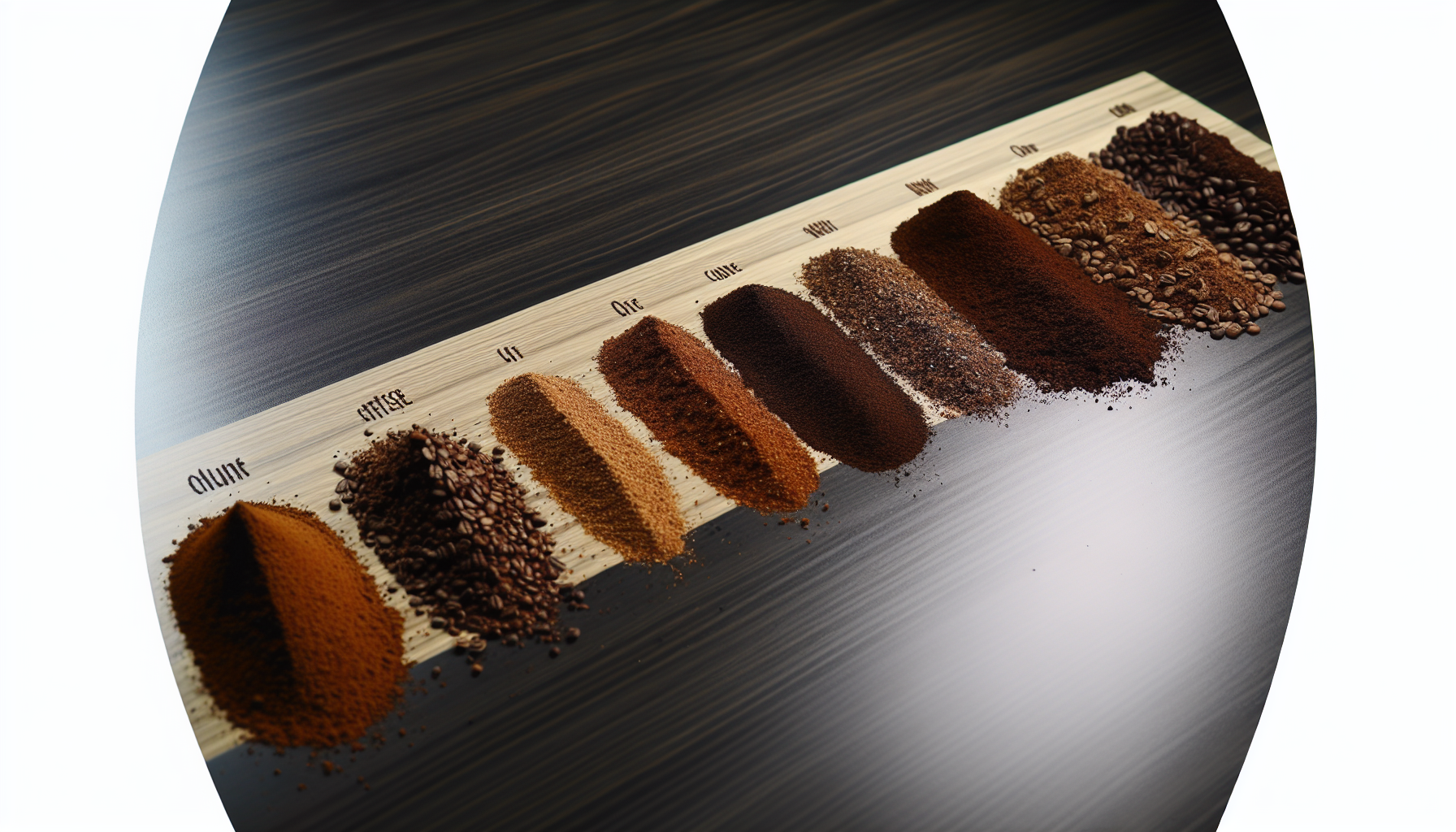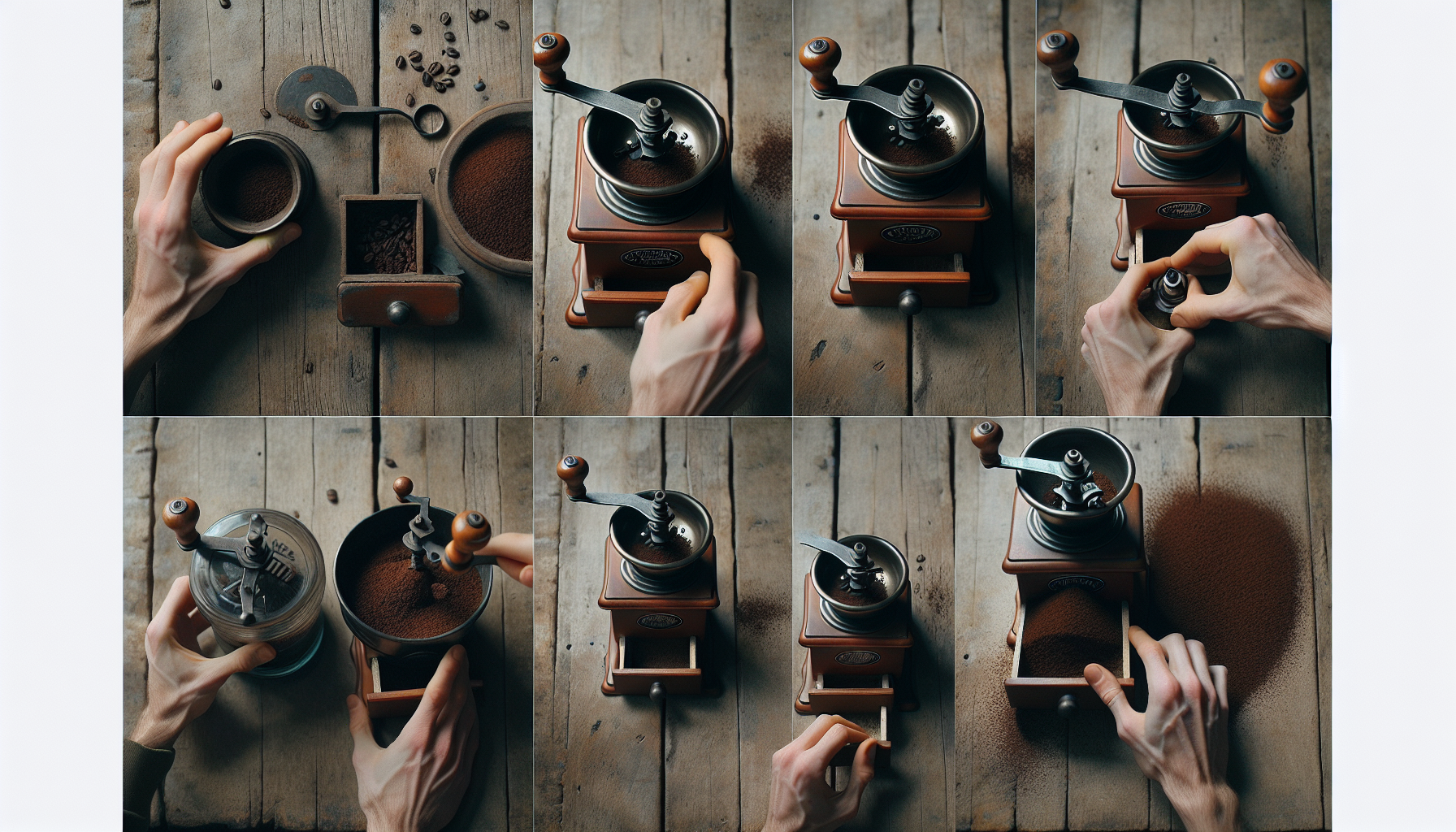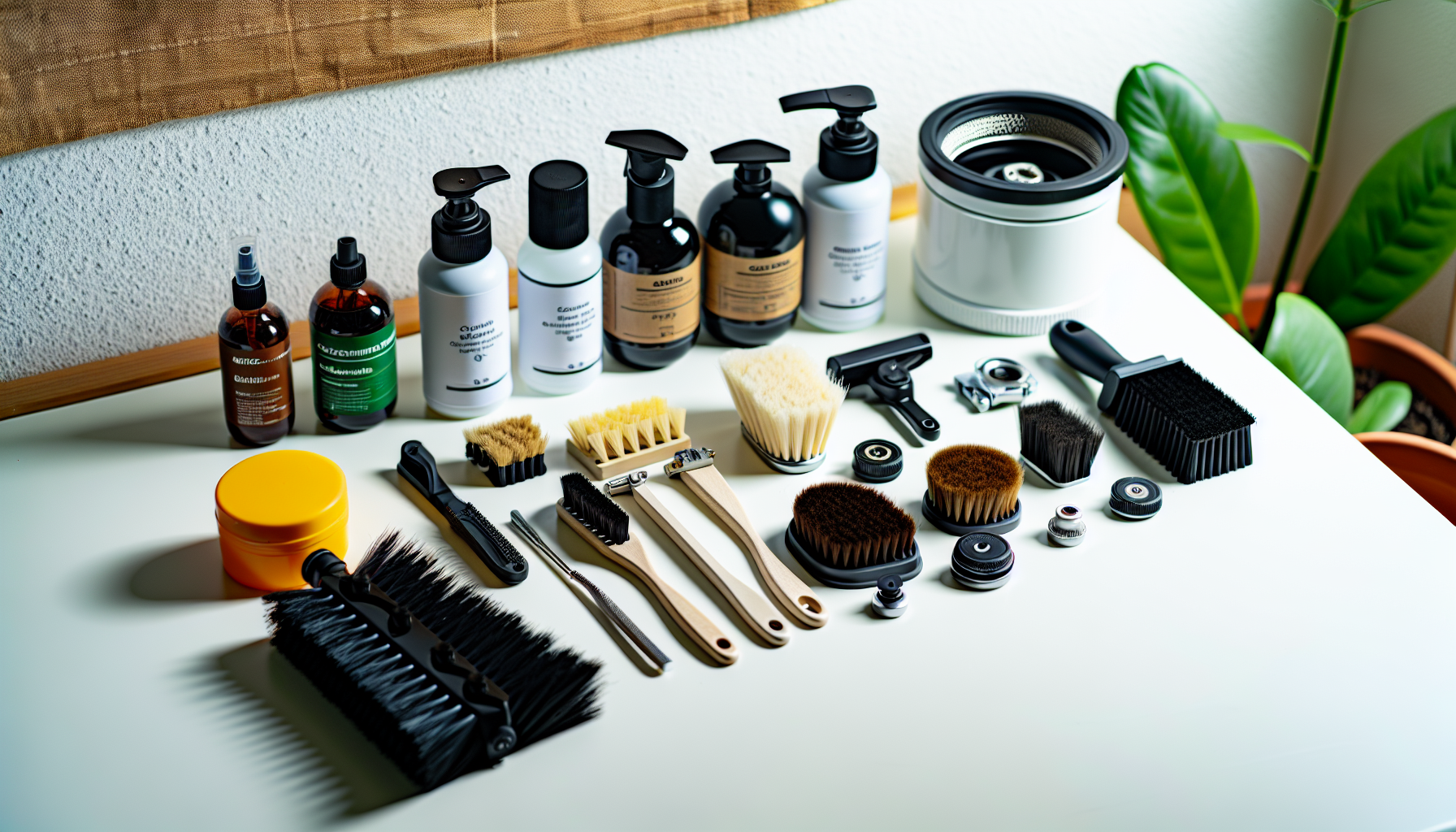If you’re wondering how to adjust coffee grinder settings for that perfect cup, you’re in the right place. The grind size has a profound impact on your coffee’s taste, and fine-tuning your grinder is essential. This article offers a straightforward guide to adjusting your grinder’s settings. By the end, you’ll know exactly how to tweak it for your favorite brewing method, ensuring a better tasting cup every time.
Key Takeaways
- Grind size is essential in coffee brewing, and it varies based on the type of grinder used—burr (conical or flat), blade, or hand—and is crucial for optimal taste and extraction.
- The grind size must match the brewing method and may need adjustment as coffee beans age to maintain the desired flavour profile, with fine grinds suited for espresso and coarse grinds for French press.
- Regular grinder maintenance, incremental adjustments, and calibration using techniques like zero-point are key for achieving a consistent and ideal grind, which directly affects the quality and flavour of the coffee.
Understanding Your Coffee Grinder

We begin by appreciating the importance of the coffee grinder, the tool that grinds our cherished coffee beans. There are two primary categories of commercial coffee grinders – burr and blade grinders. For those who prefer a portable option, we have hand grinders too. Each grinder type possesses unique mechanisms that ascertain the grind size, thus influencing the taste of your coffee.
The perfect cup of coffee, be it a French press, a drip coffee, or an espresso shot, hinges on the right grinder.
The Mechanics of Burr Grinders
Burr grinders are the crème de la crème of coffee grinders. With two abrasive surfaces known as burrs, they crush the coffee beans uniformly, creating an even grind. Burr grinders come with either conical or flat burrs. While conical burrs tend to produce a slightly uneven grind, flat burrs are champions of uniformity.
The adjustment ring, which changes the distance between the burrs, is crucial in modifying your coffee grinder. By rotating the ring, you can control the grind size, giving you the power to fine-tune your perfect cup of coffee.
Blade Grinders Explained
Unlike their burr counterparts, blade grinders use a blade to chop the beans. The duration for which the blades are active determines the grind size. However, this method often results in an inconsistent grind, which can lead to uneven extraction and possibly unpleasant flavours in your espresso shots.
Despite their limitations, the simplicity and cost-effectiveness of their design and grinding mechanism make blade grinders an affordable choice.
Hand Grinders: A Portable Option
For coffee enthusiasts on-the-go, hand grinders are a dream come true. Despite their compact size, hand grinders are equally effective as their electric counterparts in achieving the right coffee grind size. With an average weight of approximately 2 pounds and dimensions falling below 8 inches, these portable grinders combine convenience with consistency, ensuring you never have to compromise on flavour, wherever you may be.
Determining the Ideal Grind Size

Having understood different grinders and their mechanisms, it’s time to explore the realm of grind sizes more closely. The size of your coffee grind significantly influences the rate at which water dissolves flavour-determining particles. Yes, that’s right, the grind size can make or break the taste of your coffee. But, fear not, because finding the ideal grind size for your preferred brewing method and coffee beans age is easier than you think.
Matching Grind to Brew Method
Specific grind sizes correspond to different brewing methods. A fine grind setting is perfect for espresso machines, stovetop espresso makers, and AeroPress because it allows for optimal extraction and rich flavour in the coffee. These brewing methods benefit from the fine grind’s ability to maximise the surface area of the coffee grounds. On the other hand, if you’re a fan of the French press, a coarse grind akin to sea salt is what you need.
Not to forget, the drip brewing method that works best with a medium grind. Therefore, ensure you match your grind to your method for an ideal coffee cup in your next brewing session.
Adjusting for Coffee Beans Age
Did you know that as your coffee beans age, they lose natural gases, which can slow down the extraction of coffee shots? As your coffee beans age, you may need to adjust your grind size to uphold the desired flavour profile.
Grinding the coffee finer or increasing the brewing dose can counteract the loss of flavour and aroma.
Adjusting the Grind: A Step-by-Step Process

Finding the ideal grind size is only the beginning. The real challenge lies in adjusting your coffee grinder settings to achieve that size. Thankfully, this is easier than it sounds. With a little patience and a step-by-step process, you can adjust your coffee grinder to achieve the desired grind size, whether fine or coarse.
Finding the Starting Point
Identifying the starting point is the initial step in adjusting your coffee grinder. This is where the zero-point technique comes in handy. When the rotating burr makes contact with the stationary burr, this is known as the zero-point. This is an important phase in the grinding process..
Once you’ve found your zero point, you can make adjustments to achieve your desired grind size.
Making Small Increments
Keep in mind that less is more when adjusting your coffee grinder. It’s important to make small adjustments and test the grind until you achieve the desired result. Making minor adjustments in increments, one notch at a time, allows the grinder to stabilise, and helps you test the results to ensure it’s achieving the desired outcome.
This method enables coffee lovers to craft a consistent, flavourful cup of coffee using a coffee basket.
Dialing In for Espresso
For all the espresso lovers out there, dialing in the perfect grind size is a must. If you find your espresso extraction taking longer than the ideal 30 seconds, it’s time to adjust your grind to a coarser setting. Remember, the key to a robust and intense espresso lies in the finesse of the grind.
Calibration and Consistency Tips
Having armed yourself with knowledge on adjusting your coffee grinder, we can now proceed to tips for calibration and maintaining consistency.
Achieving the perfect grind size is a continuous process, and maintaining consistency in your coffee grinder is essential for that perfect brew.
The Zero-Point Technique
By now, you know that the zero-point technique is instrumental in establishing a reference point for grind size adjustments. However, it also expands the adjustment range in coarser settings. This enables a more precise and consistent grind size, helping you to unlock the full potential of your coffee beans.
Keeping Your Grind Even
An even grind is the secret to a consistent brew. Regular maintenance and cleaning of the coffee grinder are essential to ensure its optimal performance, leading to uniform and flavourful coffee grounds.
Therefore, maintaining cleanliness of grinder components is crucial for a consistent brew.
Troubleshooting Common Issues
Despite our best efforts, we may still face some issues when grinding. Whether it’s inconsistencies in the grind or issues with over-extraction, the key is to troubleshoot effectively.
Remember, in the world of coffee grinding, patience and practice make perfect when it comes to achieving the ideal ground coffee.
Preserving Your Grinder’s Performance

Like any investment, your coffee grinder demands careful treatment. Regular cleaning and maintenance not only preserve your grinder’s performance but also extend its lifespan.
Let’s discuss some vital practices to maintain your grinder’s optimal condition, to ensure your grinder purchase is worth it!
Cleaning Essentials
Keeping your grinder clean is essential in maintaining its performance and achieving a consistent grind. Adhering to a proper cleaning routine, from regular removal of excess coffee to usage of a dedicated grinder cleaner, can profoundly influence your brew’s flavour.
Fine-Tuning Over Time
As your beans change, so should your grind. Over time, various factors such as bean type, age, temperature, and humidity can influence the ideal grind settings. Hence, regularly adjusting your grinder settings helps in adapting to these changes, ensuring a consistent, tasty brew.
Optimizing Your Grind for Different Coffee Styles
Each coffee style requires a unique grind size. Whether you’re brewing a drip coffee, an espresso shot, or a French press, achieving the optimal grind size for each style can elevate your brew to new heights.
So, let’s explore how to optimize your grind for each coffee style.
Perfecting the Drip Coffee Grind
A drip coffee lover? You’ll want to stick to a medium to medium-fine grind. This grind size provides an even extraction, resulting in a balanced and flavourful cup of coffee.
Therefore, don’t forget to adjust your grind size the next time you brew.
Achieving the Right Espresso Grind
For those who prefer their coffee strong, achieving the right espresso grind is crucial. A fine grind increases the surface area, enabling a faster extraction that is perfect for the high-pressure water passage required for making espresso.
Hence, if you are passionate about espresso, adjust to a fine grind for a strong, intense shot.
Coarse Grind for French Press Perfection
And for the French press aficionados, a coarser grind is your way to coffee perfection. However, if you’re looking for a different brewing method, a finer grind might be more suitable. To grind finer, adjust your grinder to a smaller grind size, which slows down the extraction process, resulting in a more delicate flavour profile and preventing over-extraction, which can lead to bitterness.
Thus, for a flawless French press brew, set your grinder to grind coarser, ensuring the perfect coarse setting.
Summary
To sum it up, brewing the perfect cup of coffee is an art, and your coffee grinder is your paintbrush. Whether it’s a burr grinder, a blade grinder, or a hand grinder, understanding your grinder and how to adjust and maintain it is key. So, keep brewing, keep experimenting, and most importantly, keep enjoying your coffee.
Frequently Asked Questions
Should coffee grinder be finer or coarser?
For a smoother brew, use a finer setting on your coffee grinder. If your coffee tastes watery, try a finer grind, and if it tastes bitter, switch to a coarser grind.
What are the best settings for a coffee grinder?
The best settings for a coffee grinder depend on the type of coffee you’re brewing. For espresso, use a fine grind; for filter coffee, use a medium grind; and for French Press, opt for a coarse grind.
What is the zero-point technique in coffee grinding?
The zero-point technique in coffee grinding involves finding the true zero setting on the grinder and then adjusting it to a coarser setting for the desired grind size. This technique ensures precision in coffee grinding.
How often should I clean my coffee grinder?
You should clean your coffee grinder every two weeks, but adjust the frequency based on the type of beans and how often you use the coffee grinder.
What is the ideal grind size for drip coffee?
For drip coffee, the ideal grind size is medium. This ensures proper extraction and a balanced flavour in your brew.


